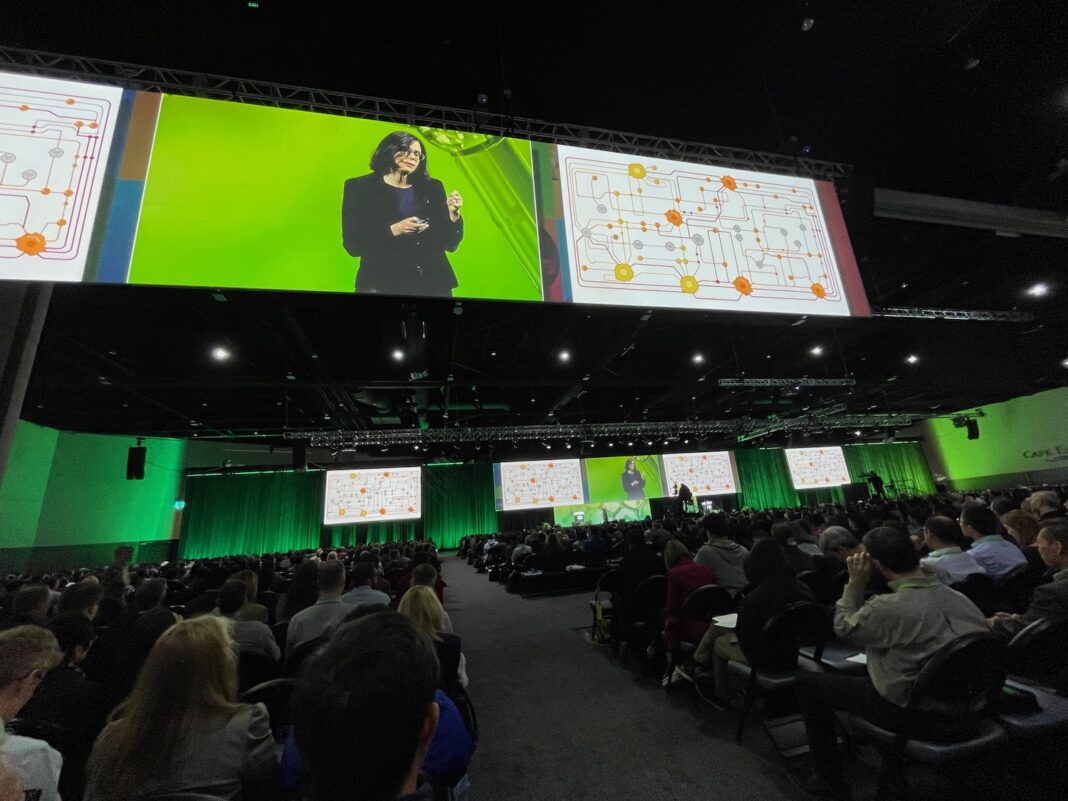SAN DIEGO, CA—Aviv Regev, PhD, head and executive vice president of Research and Early Development at Genentech, kicked off the Opening Plenary Session at the American Association for Cancer Research convention (AACR 2024) on Sunday with a thought experiment.
“There are more than 100 cancer cell types, maybe a couple of million cancer patients each year, 10,000 driver mutations, and maybe 1020 different ways variants can combine,” said Regev. “That enormous complexity makes our shared vision of understanding cancer difficult.”
But Regev’s lecture revealed that what seemed to be a far-off dream a decade ago is rapidly becoming a reality: single-cell genomics and analysis are beginning to bear fruit in cancer drug development.
A decade in the making
As a graduate student in 2015, I sat in a room at the NIH for a meeting regarding the trajectory of the young discipline of single-cell analysis. Regev took command of the floor and argued for creating cell atlases at the 3rd Annual Single Cell Analysis Investigators Meeting.
At the time, genomics had only begun to venture past tissue- or organ-level resolution—getting tens of thousands of cells for a single sequencing experiment seemed like a fantasy. But Regev, already a respected investigator at the Broad Institute, MIT, and Howard Hughes Medical Institute, advocated championing a human single-cell atlas. This would be no small undertaking—with 37.2 trillion cells, a human cell atlas would be a problem far more complex than the Human Genome Project.
Regev’s trailblazing idea was summed up in her NIH presentation, “Towards a Human Cell Atlas.” According to her vision, this comprehensive reference map of human cells would transform the understanding of health and disease to drive major advances in healthcare and medicine worldwide.
Nine years later, her AACR plenary lecture, “From Cell Atlases to Medicines,” illustrated exciting progress on her cellular cartography journey. Regev brought up a newer variant of a slide I saw her present nearly 10 years ago to show how she thinks of this massive challenge, using fruit as a metaphor for the individual cells embedded in a cancer ecosystem.
She described how tumors were studied in the early days of genomics at the level of samples as a fruit smoothie. Behind a technical revolution in single-cell genomics over the past decade, cancer can now be looked at the level of individual cells, even in a tissue spatial context, which, metaphorically, is like reconstructing all of the components of an acai bowl with each ingredient correctly positioned.
Everything, everywhere, all at once
In nearly four years since she joined Genentech, Regev’s research has produced multi-modal single-cell atlases that are now setting the groundwork for the next generation of cancer treatment at the world’s first biotechnology company.
In recent years, Regev’s teams have produced a tour de force of single-cell tools, datasets, and analysis. They’ve described algorithms for inferring single-cell profiles from histology stains, methods for uncovering multicellular programs from either spatial data or single-cell data obtained without spatial information, and tools to use in vivo optical CRISPR screens for identifying predictive signatures from single-cell sequencing to guide therapeutic approaches to overcome immunotherapy resistance.
The work of her team at Genentech has enabled collaborators at Memorial Sloan Kettering Cancer Center to develop personalized RNA neoantigen vaccines for pancreatic cancer.
Under Regev’s reign, Genentech’s artificial intelligence (AI) and machine learning (ML) capabilities have also flourished. Regev showed a sped-up movie demonstrating visualization of Genentech’s state-of-the-art deep learning framework, GNEprop, for optimal binding sites of small molecules.
A collaboration with AI company Recursion is writing new ML algorithms for generating maps of human cellular biology to rapidly find and develop medicines against novel targets in oncology (and neuroscience). The collaboration has already identified and validated the initial hits by building oncology maps spanning whole-genome arrayed CRISPR knockouts and hundreds of thousands of small molecules.
Genentech has also partnered with NVIDIA to pioneer the ‘lab-in-the-loop’ concept, where extensive experimental data feeds computational models that uncover patterns and make new, experimentally testable predictions. The collaboration also couples Genentech’s AI capabilities, extensive biological and molecular datasets, and research expertise with NVIDIA’s world-leading accelerated computing capabilities and AI to speed up drug discovery and development.
“Drug discovery and development, like biology, only work when all components are tied together,” said Regev. “We rely on everyone and everything being connected: the lab, the clinic, and the data. When they are connected, they have the potential to go after these problems, even big ones like cancer.”



